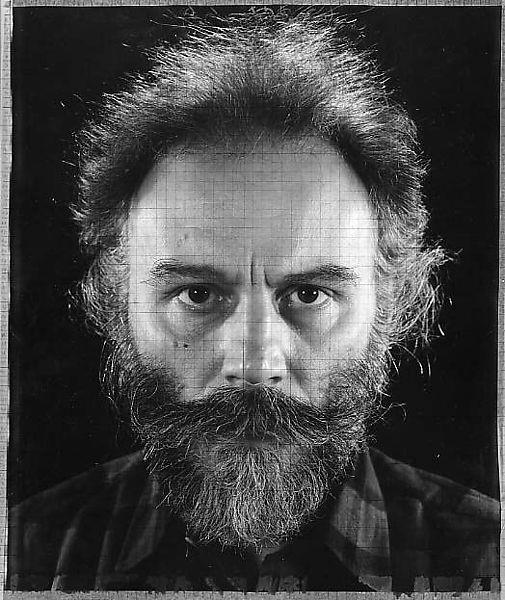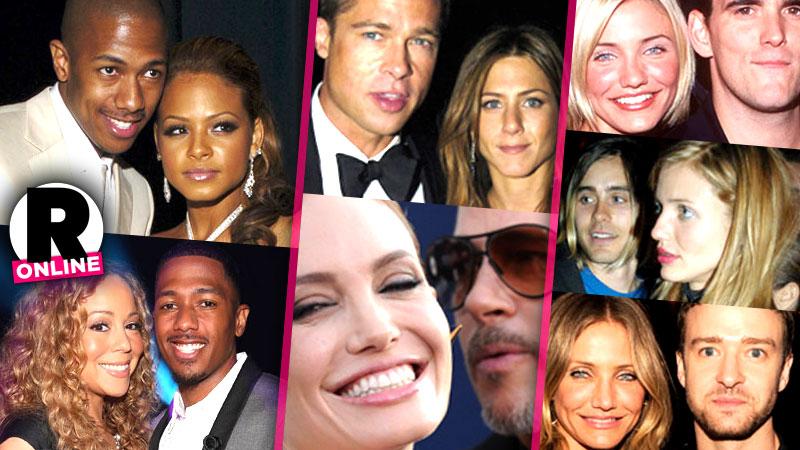
Contemporary art is very much about the concept of appropriation. Sherrie levine, an artist who draws inspiration from many sources, often quotes entire works of art in her own work. In her work, Levine questions gender roles, creative ideas, consumerism, and the social origins of art. Other artists, such as Richard Prince, have re-photographed famous billboard advertisements and photojournalist shots. They take commercial images to new artistic heights.
Fair use
Although appropriation art is a very popular type of art, it is also susceptible to copyright claims. Artists sometimes use works with few modifications and try out the results. Fair use is a thin shield. It must be "transformative" to allow fair use of a piece.

A recent case in which fair use was denied in an appropriation art dispute has sparked a legal debate. In an amended decision, the United States Court of Appeals for the Second Circuit ruled that a photo of Andy Warhol's in the "Prince Series" constituted an infringement of the photographer's copyright and was not a fair use of the photo.
Reenactment
Reenactment is also known as appropriation. This can be defined as an artistic process where historical events or themes are used to create new works of art. It is a form of transmedia storytelling that plays with concepts such as translation, authority, and resignification. It is a tool for memory and can address challenging issues.
Reenactment is a term that has gained increasing importance in cultural studies. This term is increasingly important because it addresses questions such as memory and transmission, cultural theft, and the potential of communities to stage their own history. It has been interpreted as a response towards the absence self-determined history. In this context, artistic reenactment has emerged as a form of cultural appropriation and an assertion of autonomy in the face of heteronomous history.
Reconstruction
A Reconstruction of AppropriationArt explores the process of theft through its historical precedents. The 1930s and works of Marcel Duchamp, Kurt Schwitters are the focus of the first period. The second period is about appropriation of North American art. Douglas Crimp, an artist, contrasts styles in 1980s art and 1990s work. They view this as the beginning of an ongoing problem.

Inappropriation is a common technique used by artists since the 1990s. Known as "appropriation art," it has spread beyond a single medium and has become a part of every field of art. Some people see it as repurposing. Others view it as editing the "script of cultural history."
FAQ
What is Tik Tok pop culture like?
The answer is yes! This is not only for teenagers. These short videos can be shared with friends and family to share their emotions, thoughts, and life moments.
Over 200 million people are using the app daily around the world. This number is growing by millions every day.
This makes TikTok an incredible opportunity for brands to connect with consumers and build meaningful relationships.
TikTok is also home many influencers, who have built large followings on the platform. These creators create original content and engage audiences around the world.
What are you waiting to do? If you want to take advantage of this trend, here are four ways to do it.
-
Create Viral Content
-
Engage Influencers
-
Use Visuals Effectively
-
Creativity with Your Audience
What is the popular music culture?
Popular music culture is a dynamic phenomenon that can take many forms.
The use of certain music styles (e.g. jazz, rock) and lyrics is what defines popular music culture. It also covers the influence of visual media like film, television, fashion advertising, and so on, on artists' careers as well as public perception.
It's also how fans interact and support their favorite artists.
A key element of popular music culture are the "superstars", which are musicians who have achieved fame or fortune.
These icons transcend many genres and have become cultural icons. Their popularity has also influenced the development of popular music.
Some other elements of popular music culture are:
* The rise and development of recording technology, from acoustic instruments through to electric guitars or microphones.
* Invention of the record player and radio
* The birth and rise of rock & roll.
* The introduction of television and film
* The birth of MTV/VH1;
* The creation of the internet.
How can pop culture be avoided?
First, it is important to recognize when pop-culture influences us. Next, we must be aware of when pop culture is influencing us and make sure we don't get influenced. Here are some ways you can avoid being influenced by bad influences
-
Avoid watching violent TV shows like Game Of Thrones.
-
Do not spend too much time on the Internet. Read books instead.
-
Spend less time watching television. Spend your free time on healthy activities.
-
Take care of what you post online. Remember that you can never delete comments once they've been posted.
-
You should ensure that all websites you visit are secure. Before you give out any personal information, check the websites.
-
Don't allow anyone to pressure you into dangerous actions.
Talk to an adult to help you if you find yourself addicted to pop music. You can either call your local library (800-THELOOST), or the National Center For Missing & Evacuated Children (1-808-THELOOST).
What examples are there of pop culture?
Pop Culture is the 21st century's art form. Pop Culture encompasses all types of popular entertainment: music, film and TV, video games fashion, advertising, comics, and more. The term was first used by Neil Postman in his 1985 book Amusing Ourselves to Death. Pop was a method of mass communication using cheap tricks and formulaic techniques to create an illusion that spontaneity and uniqueness.
He did however point out that most people don't feel genuine enjoyment because they are trained to seek media experiences which make them feel superior. He also argued that cultural expression has contributed to the decline in critical thinking skills among young adults.
Pop culture has also been referred to as popular culture or consumerism.
Who came up with the term Pop Music?
Invented by Frank Zappa. Pop music was the name he used to describe his music.
He stated that he wanted to create music that appealed to everyone. His music is called pop music because of this.
Zappa also invents the phrase "You'll know it's pop when ..."". It means that something is extremely popular if you have many people enjoying it. For example, Michael Jackson's Thriller album is one of the best-selling albums ever.
Zappa's definition of pop music is different from how it is now. Today, pop music includes all types of music. But, there were only certain types of music that was considered pop back in those days.
What is some pop culture from 2020?
The music industry is evolving rapidly. We saw artists like Travis Scott and Post Malone reach number 1 on Billboard’s Hot 100 chart. This was a record-breaking feat for any artist.
The same holds true for streaming services. Spotify reported that Spotify streamed more 10 billion hours audio content last year. This is 5x the amount of audio content Spotify users listen to today, compared to just five year ago.
This has resulted in a major shift in the way people consume media. These days, people spend more time consuming content than creating it.
Everybody, from babies to old age, can now listen to high-quality audio content. This means that anyone can record, edit, mix, and release their music.
You don't have to go to school to learn classical instrumentation in order to play your favorite songs. It's easy to download an app and add your voice. Then upload the videos to YouTube.
Don't worry if your not interested in making music. You can always watch other people do it. You can find videos on many channels of songs, including parodies and covers.
What can pop-culture teach us?
Modern society places more emphasis on material possessions than other things. This is especially true for young people. They spend hours each day staring at screens. They are addicted to video games, movies, and surfing the web. All of this distracts them from focusing on school work. This causes them to fail classes.
It is a world where everyone wants in. That means being popular. Popularity is dependent upon having money, clothes and other possessions. Some people do this by doing things that aren’t right.
We have become too dependent on technology. We have all the information we need thanks to technology. Unfortunately, not all information can be trusted. Many false rumors circulate on the Internet. These rumors spread fast because people share them on social networking sites. It's easy to post something without checking whether it's true.
People have lost their ability to think critically. They believe everything they read on the Internet. They believe what they see on TV and in magazines. They stop thinking about themselves. They instead follow the crowd.
We lose control of our lives when we depend on others to tell we what's going on. Pop culture teaches us to depend on others. It can also lead to lazy people. Although the truth is out there and we often don't find it, it can make us lazy.
Statistics
- In 1987, US films captured 56% of the European film market. (socialsci.libretexts.org)
- Recently, the market share across Western Europe has ranged from 60-75% (Hopewell, 2013). (socialsci.libretexts.org)
- Latinos represent roughly 19% of the U.S. population. (npr.org)
- According to Kathryn Sorrells (2013, pp. 142-144), there are several ways that we can become informed consumers of popular culture. (socialsci.libretexts.org)
- According to Dictionary.com, popular culture, or low culture as it is sometimes referred to is comprised of the “cultural activities or commercial products reflecting, suited to, or aimed at the tastes of the general masses of people” (7/21/19). (socialsci.libretexts.org)
External Links
How To
What is pop culture in movies?
Popular Movies Culture covers all aspects of entertainment, including books, magazines and newspapers, television programs, websites, TV programs, websites, blogs and social media.
There are several categories for movies: comedy, horror, action/adventure. fantasy, science fiction. romance. thriller. animation.
Movie plots often follow a predictable series of events that lead to satisfying conclusions.
Films' success is dependent on how closely they follow this formula.
Here are some common plot points:
-
A protagonist who has to overcome obstacles in order achieve his/her goal.
-
A villain who opposes a protagonist throughout the film.
-
A moral dilemma that requires the protagonist to make a decision;
-
The twist that ends all.
If your story doesn't fit into one of these categories, you may need to reevaluate your concept or outline before you begin writing.
These are the questions you should pay attention to:
-
How do I establish my setting?
-
What is my protagonist looking for?
-
Why should readers care so much about my story?
-
Where is my story going now?
-
Who is my main person?
-
Will there be conflict?
-
What is the climax?
-
What's my resolution?
-
Is it happy or sad that the ending is here?
-
Do I have to introduce new characters
-
Does my story feature multiple settings?
-
Is there a subplot?
-
Are there major themes?
-
Is it possible to tell a complete story in just one chapter.
-
How effective am I using dialog?
-
Is my language clear?
-
What is the context for my vocabulary?
-
Have I used active voice instead of passive voice?
-
Are there any spelling errors?
-
Is my grammar correct?
-
Are there too few adverbs in English?
-
Is there something I could do better?
-
What is your first impression after I finish editing?
It's not enough to write a good novel, it is also your job to get it published.